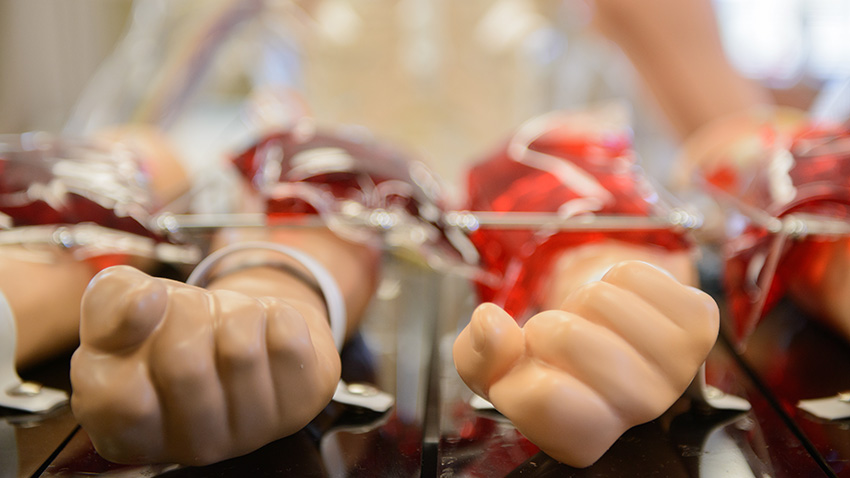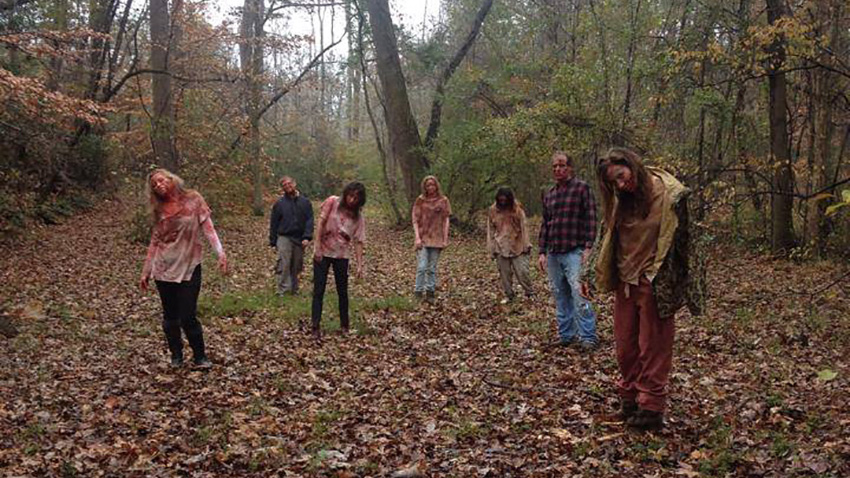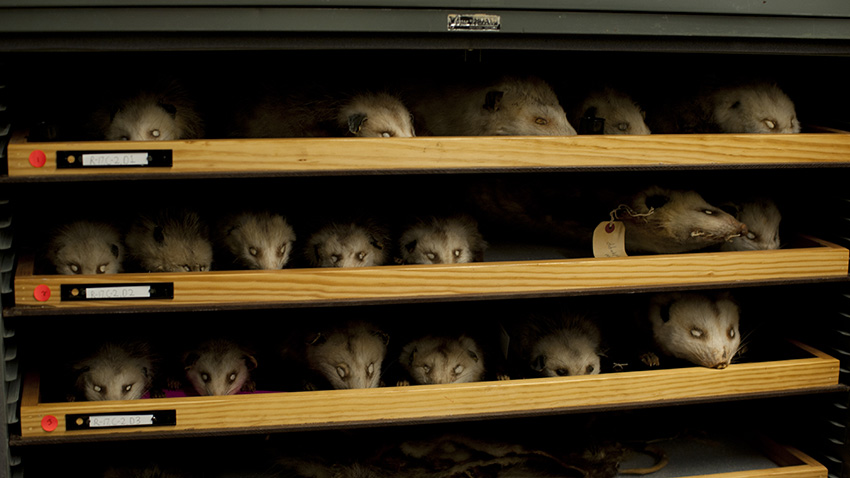1. Haunting music
In the Moody Music Building Concert Hall, Dr. Faythe Freese sits at UA’s famous Holtkamp pipe organ and plays a few bars. Recognize the composition?
For many of us, this music brings to mind supernatural movie villains who have sent chills down the spines of audiences since the days of silent film. But the 18th-century composition’s origins are not remotely sinister.
“JS Bach’s ‘Toccata and Fugue in d minor,’ BWV 565, was composed in 1708, long before silent movies. Depending on your viewpoint, it is an unfortunate, or fortunate, marriage of film and an organ work composed 186 to 221 years prior to the life of silent movies,” said Freese, professor of organ in the School of Music. “Originally in 1708, there was no extracurricular theme, that is, that the Toccata was not meant to serve an agenda as haunted music, it was just a ‘regular’ piece of organ music.
“The first instance of combining the Toccata with (sound) film might be ‘Dr. Jekyll and Mr. Hyde’ (1931). ‘Toccata and Fugue in d minor,’ a wonderful solo organ work, has become cliché through so many performances in the Halloween movies, performances that are quite often less than stellar.”
2. Spare “body parts”
These arms are not props in a sci-fi or horror movie. They are training models used in the Capstone College of Nursing’s clinical practice lab and simulation center. Students use the models as practice tools when learning to insert IVs and draw blood before working on real patients.
The nursing school’s inventory ranges from high-fidelity patient simulators to demonstration models such as torsos, arms, legs and everything in between. Nursing students begin working with the simulators in their first semester of upper level coursework, performing basic assessments. By their last semester, they are working on the patient simulators in highly complex scenarios that test all the knowledge and analytical skills they’ve gained at the Capstone College of Nursing.
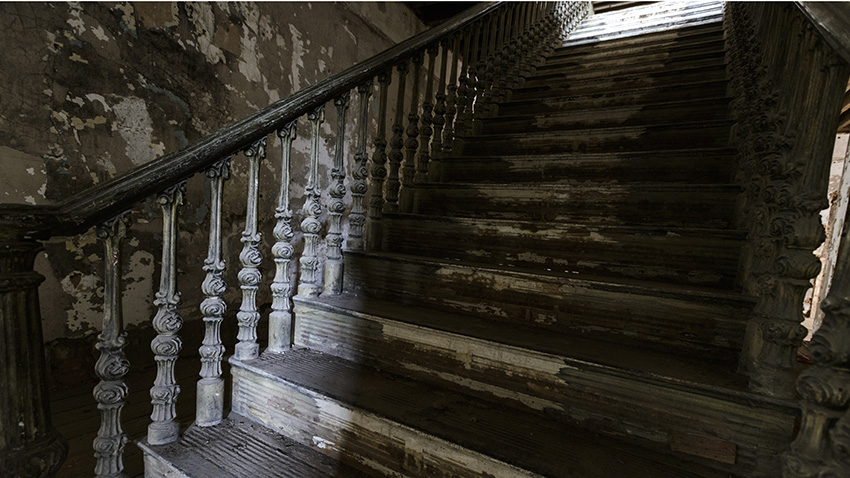
3. Stairs that look like they belong in a haunted house
This 1850s staircase appears a bit spooky now, but when renovations to the main building on UA’s Bryce campus are complete, it will lead visitors up to a grand hall with stately arches and a rotunda. The structure will house the University welcome center, with a cultural center, reception venue, and associated office and administrative space. The building will also hold museums dedicated to both University history and the history of mental health. The expansion will make space for the UA Museums’ vast collections, especially natural history, special collections and the Jones Art Collection. Connected to the building through a lobby will be a performing arts center, designated as the new home of the department of theatre and dance. Read more about the history of Bryce campus and plans for its future.
4. Zombies
During Fall Semester 2013, faculty in the College of Communication and Information Sciences used zombies to bring education to life for a group of telecommunication and film students. The assignment? Producing the pilot episode of “Zom-Com,” which tells the story of a group of zombie chasers hired by corporations to tag and study zombies.
The film project was a collaboration between two classes. In TCF 451: Advanced Television Production, students applied their audio/visual skills and learned hands-on about casting, marketing, branding, makeup, wardrobe and special effects. In TCF 444: Zombies in Culture, students examined the zombie through a variety of genres and time periods, from its origins as a Caribbean voodoo monster to the work of George A. Romero, the father of the modern zombie, to more current depictions in the post-9/11 world.
“Zom-Com” premiered in April 2014 at the Bama Theatre in downtown Tuscaloosa and was screened at film festivals in Birmingham; Memphis, Tennessee; and Burbank, California. View the pilot episode of “Zom-Com.”
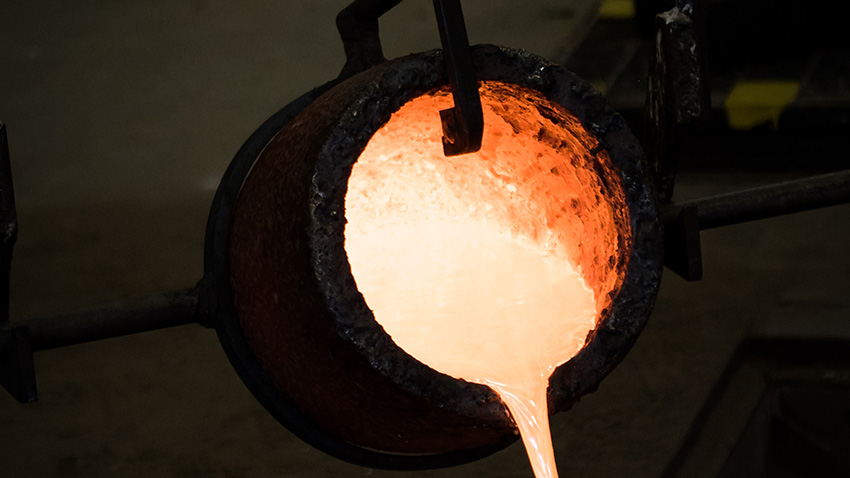
5. A cauldron of molten metal
It may look like hellfire, but this vat of molten bronze is destined for a loftier purpose. Once poured into a mold and cooled, it will become a statue – the realization of an artist’s vision.
Renovated in 2013, UA’s workshop and foundry facility, located between Hardaway Hall and the old Bureau of Mines building, is a collaborative learning space shared by the College of Engineering and the College of Arts and Sciences. The state-of-the-art facility includes a consolidated machine shop for both colleges, providing opportunities for collaborative work and resource sharing between students and faculty in both divisions.
There are two foundries. One supports the sculpture program in the department of art and art history. The other supports the metallurgical and materials engineering department, one of only 20 Foundry Educational Foundation Certified Schools in North America.
6. A cabinet full of opossums
These stuffed opossums are among the many curiosities tucked away on the third floor of Mary Harmon Bryant Hall, where the collections of The University of Alabama Museums are stored. Specialty space-saving metal cabinets, which can part to form aisles for visitors to peruse, house everything from invertebrates, taxidermic specimens, crystals and rocks to World War II artifacts, textiles, photographic plates and pottery. Professors bring classes for tours, or borrow items for classroom use. Classes in anthropology, osteology, geology and the biological sciences in particular make use of the collections. Outside researchers also submit requests to use the collections.
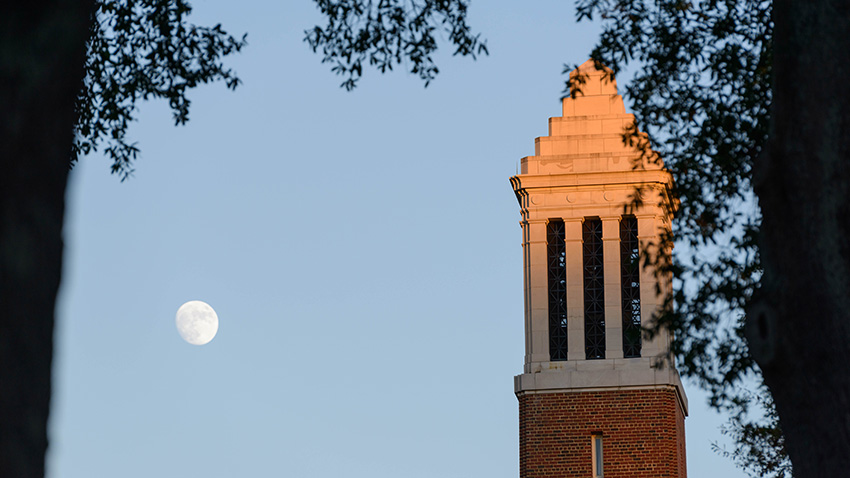
7. Ghostly legends
University of Alabama faculty, students and community members benefit from the trove of information and resources found at Amelia Gayle Gorgas Library and Smith Hall, home of the Alabama Museum of Natural History, which are both named after prominent figures in UA’s history. How else do the legacies of Dr. Eugene Allen Smith and Amelia Gayle Gorgas live on at the University? Unexplained voices, feelings of being watched and a malfunctioning elevator, among other things, have led some to wonder. Read “Spirits of the Capstone.”

